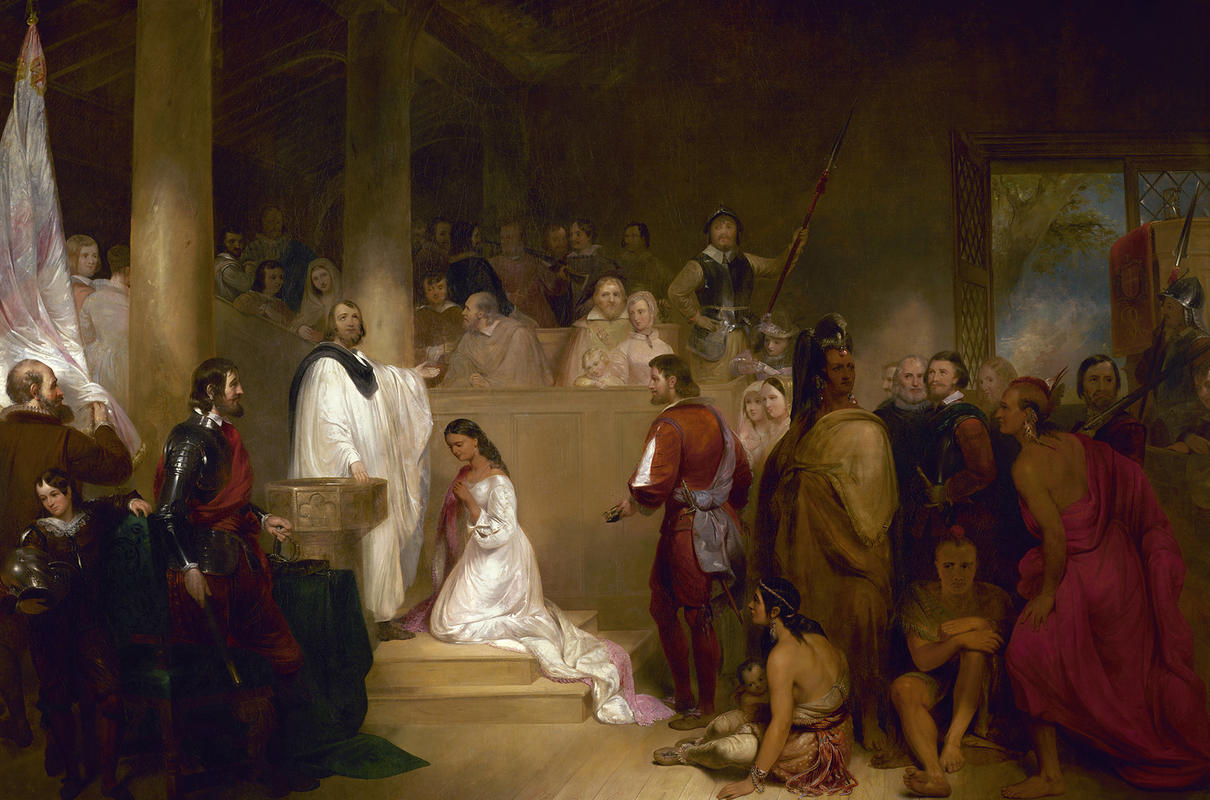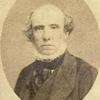More about Baptism of Pocahontas

Contributor
John Gadsby Chapman's Baptism of Pocahontas, depicting the teenaged Mataoka of the Powhatan people, and commissioned by the United States as the fifth painting for the Capitol Rotunda, represents a turning point in the awareness of American Indians in the public consciousness of European immigrants.
This is not to say that European immigrants became more aware of an accurate depiction of the colonial relationship through the painting, as it is certainly wrapped up in the missionary zeal of the colonists. Nonetheless, there is a sense of the sovereign in the story of Mataoka, later known as Amonute, Pocahontas, and Rebecca Rolfe, which reminds all settlers in the Americas that they are guests. As the contemporary writer Samuel Purchas wrote of her, she "carried her self as the daughter of a king."
Chapman presents the narrative all children of the United States expect. Chapman's literary accompaniments to his paintings betray a thoroughly confused and symptomatic historical lens which has become so ubiquitous in this society that it is nearly invisible. Chapman's books belong to an era when people seemed to expect the artist to provide a historical overview of their paintings, because of the rare and supposedly unverifiable nature of the subject matter.
The first and most significant turn in Chapman's story of this painting is his explanation that the colonization of the people and their conversion to Christianity was innocent. He acknowledges that many of the colonists were motivated by "the expectation of improving their own condition," but claims that those who contributed most to the building of the colonies had selfless missionary intent.
This should all be a footnote to the history of Mataoka's people, but, unfortunately, the Virginia Racial Integrity Act of 1924 managed to "accomplish" one of the most awful goals in the history of governance and of warfare: the statistical destruction of the native people by forcing all citizens to list themselves as either "white" or "colored." A central method to destroy titles of indigenous sovereignty is the overreach of a state government with far more extreme views than the U.S. Supreme Court.
Today, the Powhatan are not federally recognized, although their history, and their most famous daughter, are inherent to the way the United States narrates its own foundation. The government allows the states to offer recognition to nations, which they do with a much smaller degree of material responsibility than the federal government. State recognition and federal recognition, as two separate and conflicting systems of national recognition, two separate systems of "granting" sovereignty to inherently sovereign nations, are often confusing to people. Unfortunately, like the Ahwahneechee people of Yosemite and the Muwekma Ohlone of the San Francisco Bay Area, the Powhatan are a nation unrecognized by the United States itself and yet living in its midst, telling its story.
The true story of Mataoka is caught in a battle between the triumphalism of the painter and the contemporary consciousness which recognizes that the colonists did make mistakes, that the colonists were both convinced of their own righteousness and told these stories as a kind of alibi. To recover the history of a political symbol, to turn a symbol back into a person, as the Mvskoke Creek poet Joy Harjo writes,
You will have to navigate by your mother's voice, renew the song
she is singing.
Sources
- Chapman, John Gadsby. The Picture of the Baptism of Pocahontas: Painted by Order of Congress, for the Rotunda of the Capitol. London: P. Force, 1840.
- Harjo, Joy. How We Became Human: New and Selected Poems 1975-2002. New York: W. W. Norton & Co., 2004.
- Hornung, Alfred. Intercultural America. Heidelberg: Universitätsverlag Winter, 2007.
- Purchas, Samuel. Hakluytus Posthumus, Or Purchas His Pilgrimes: Contayning a History of the World in Sea Voyages and Lande Travells by Englishmen and Others 19. Glasgow: MacLehose, 1905.
- Stone, Erin Woodruff. "America's First Slave Revolt: Indians and African Slaves in Española, 1500–1534." Ethnohistory 60, no. 2 (2013): 195-217.
- Tilton, Robert S. American Lavinia: the Pocahontas narrative in ante-bellum America. Stanford: Stanford University Press, 1992.











